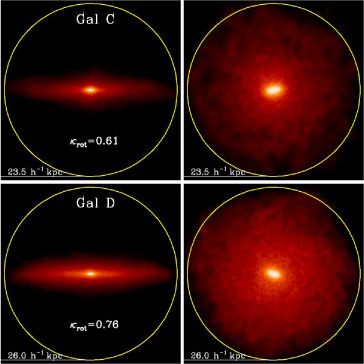

In the traditional picture, disk galaxies form predominantly in halos with high angular momentum and their recent assembly history is fairly quiet, whereas spheroids are the slowly-rotating remnants of repeated merging events. Scientists at the Max Planck Institute for Astrophysics have now used hydrodynamical numerical simulations of large volumes of the universe to show that, in galaxies like the Milky Way, there is a surprisingly poor correlation between halo properties and morphological features. In the simulations, disks form in halos with both high and low net spin, and mergers play a negligible in the formation of spheroids. More important than the morphology is the angular momentum of the gas that accretes over time to form a galaxy.
See the website for more details: http://www.mpa-garching.mpg.de/mpa/research/current_research/hl2012-5/hl2012-5-en.html(SY)
